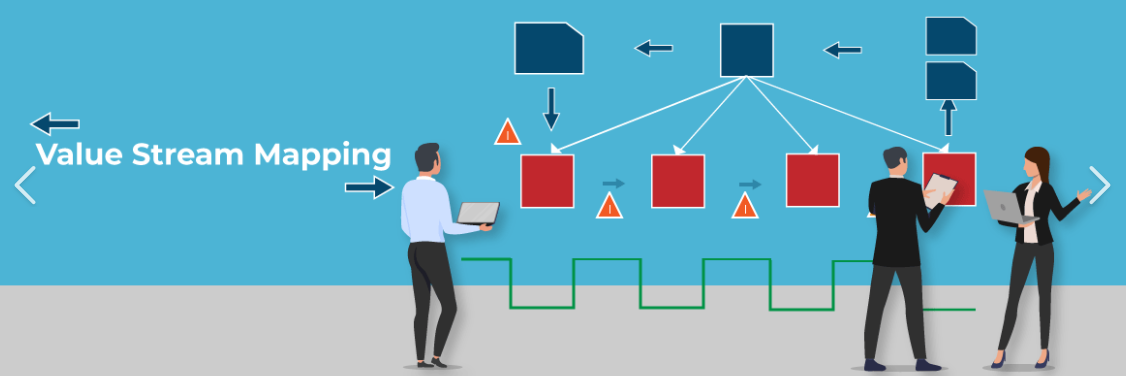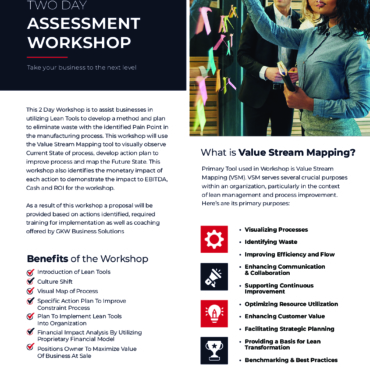Value Stream Mapping is a powerful tool to eliminate waste in your business and drive EBITDA and Cash.
Value Stream Mapping (VSM) is a lean-management method used to visualize and analyze the steps involved in taking a product or service from its initial conception to the customer. It helps identify inefficiencies, delays, bottlenecks, and areas where value is added, allowing organizations to streamline their processes. Here’s a detailed explanation of the value of Value Stream Mapping:
1. Visualizing the Entire Process
VSM creates a comprehensive visual representation of the flow of materials, information, and work through a process. This map enables teams to see the entire workflow, making it easier to understand how different parts of the process interact and contribute to the final product or service. The visual clarity can reveal hidden inefficiencies or problems that may not be obvious when looking at individual steps in isolation.
2. Identifying Waste (Non-Value-Adding Activities)
One of the primary goals of lean management is to reduce or eliminate waste, often referred to as “muda” in lean terminology. VSM helps identify different types of waste, such as:
Overproduction (producing more than needed)
Waiting time (delays between process steps)
Excess inventory
Defects or rework
Unnecessary transportation By mapping out each step and analyzing whether it adds value to the customer, VSM makes it easier to identify these non-value-adding activities.
3. Improving Efficiency
Once waste is identified, organizations can work on streamlining operations to improve efficiency. VSM helps reduce cycle time (the total time to complete a task) and lead time (the time taken from order to delivery). By doing this, companies can shorten the time it takes to bring products or services to market, reduce costs, and improve customer satisfaction.
4. Enhancing Communication and Collaboration
The process of creating a value stream map often involves cross-functional teams, which helps break down silos and improve communication across departments. Since the map provides a unified view of the process, everyone involved can see the same information, promoting collaboration and a shared understanding of how to improve the process.
5. Identifying Bottlenecks and Constraints
Bottlenecks are steps in a process that slow down the overall workflow. By visually mapping the flow of work and information, VSM can highlight where bottlenecks occur, allowing teams to target those areas for improvement. This is crucial in improving throughput and productivity.
6. Customer-Centric Focus
VSM helps organizations align their processes with customer needs by focusing on value-adding activities. By looking at the process from the customer’s perspective, businesses can ensure that every step contributes to delivering the right product or service to the customer, with fewer delays and higher quality.
7. Facilitating Continuous Improvement
Value Stream Mapping is not a one-time exercise but a tool that promotes continuous improvement (Kaizen). Once the current state of the process is mapped and improvements are implemented, organizations can create a “future state” map that reflects the desired improvements. This iterative approach encourages ongoing refinement and optimization of the process.
8. Data-Driven Decision Making
VSM is typically backed by quantitative data, such as lead times, cycle times, changeover times, and inventory levels. By combining the visual map with hard data, decision-makers can make informed choices about where to focus improvement efforts and how to allocate resources effectively.
9. Standardizing Workflows
By understanding the current workflow in detail, organizations can standardize processes to ensure consistency in production or service delivery. This reduces variability, leading to more predictable outcomes and higher quality.
10. Supporting Digital Transformation
In the digital age, many organizations are looking to adopt automation and other technologies to improve operations. VSM can serve as a foundation for digital transformation by providing a clear understanding of existing processes, highlighting where automation or digital tools could deliver the most value.
Conclusion:
Value Stream Mapping is an invaluable tool for businesses looking to improve their processes, reduce waste, and enhance customer value. By visualizing the entire value stream, teams can identify inefficiencies and areas for improvement, leading to more efficient operations, better use of resources, and higher customer satisfaction. The collaborative and data-driven nature of VSM makes it a cornerstone of continuous improvement in lean management practices.
GKW Business Solutions is offering a 5 Day Workshop on VSM to unlock the opportunities as well as how to understand the Financial Impact to your Balance Sheet and Income Statement. Give us a call for a free discussion on how this tool can benefit your organization.




